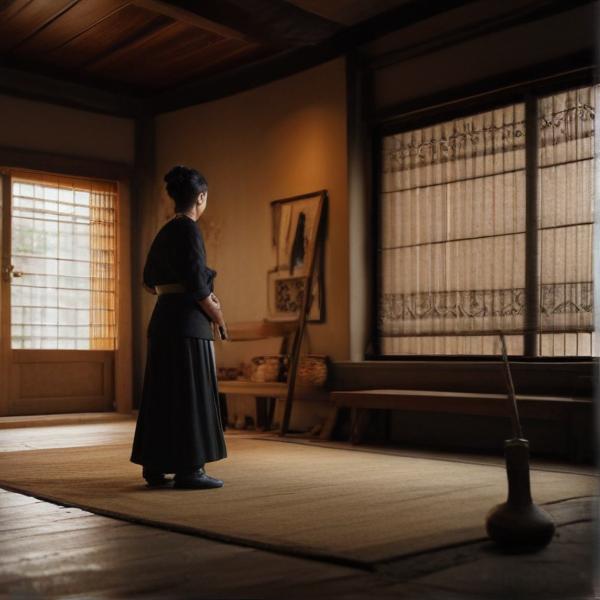基本信息 (Basic Information)
含义与用法 (Meanings & Usage)
中文核心释义 (Core Chinese Meaning): 下身穿的衣服,裙子;指衣服的下摆部分。
英文核心释义 (Core English Meaning): lower garment, skirt, or the lower part of a robe/clothing
象形意义 / 为何这么写 (Pictographic Meaning / Writing Rationale)
文言文释义 (Classical Chinese Meaning)
与现代意义相近,文言文中主要指下身穿的衣服,如“衣裳”。Similar to modern meaning; in Classical Chinese, mainly referred to lower garments, such as in the term '衣裳' (clothes).
深入学习 (In-depth Study)
字源故事 (Origin Story)
字形演变 (Character Evolution)
常用词语和例句 (Common Words & Examples)
衣裳 (clothes, garments (general term for clothing, often poetic))
她换上了崭新的衣裳,神采奕奕地出门了。
Eng: She put on brand new clothes and went out radiantly.
裙裳 (skirt, dress)
女孩们在春天里穿上漂亮的裙裳。
Eng: The girls wear beautiful skirts in the spring.
相关成语 (Related Idioms)
相关成语信息待补充。Related idiom information pending.
多语言翻译 (核心释义) (Translations (Core Meaning))
- French: jupe, bas de vêtement
- German: Rock, Unterkleid, unterer Teil eines Gewands
- Spanish: falda, parte inferior de la vestimenta
- Italian: gonna, parte inferiore dell'abito
- Portuguese: saia, parte inferior da roupa
- Russian: юбка, нижняя часть одежды
- Arabic: تنورة، الجزء السفلي من الملابس
- Persian: دامن، بخش پایینی لباس
- Dutch: rok, onderkant van een kledingstuk
- Polish: spódnica, dolna część odzieży
- Vietnamese: váy, phần dưới của trang phục
- Ukrainian: спідниця, нижня частина вбрання
视频学习资源 (Video Learning Resources)
通过以下链接在热门视频网站搜索 "裳" 的更多讲解:
Search for more explanations of "裳" on popular video sites:
- 在 Bilibili.com 搜索 "裳 字源 说文解字" (Search on Bilibili)
- 在 YouTube.com 搜索 "shang 裳 character origin etymology" (Search on YouTube)
网络参考 (Web References for "裳") ()
网络内容摘要 (Web Content Summary):
```html裳(拼音:cháng)是一个形声字,从“衣”表示与衣物有关,“尚”作声旁指示读音。它在六书中属于形声结构。 裳 (pinyin: cháng) is a phono-semantic (形声) character: the "衣" component indicates meaning (related to clothing), and "尚" gives a clue to pronunciation.
核心含义是古人下身所穿的裙状衣服,男女都用,与现代意义上的裙子类似,但不是裤子。在古代诗文中常见,如《诗经》和《易经》均有引用。 Its core meaning is the skirt-like lower garment in ancient China, worn by both men and women, similar to a skirt but not trousers. It appears frequently in classical texts such as the Book of Songs and the Book of Changes.
- 文化趣闻:古人常将“裳”作为美好服饰的象征,常与“衣”搭配,如“绿衣黄裳”。 Cultural note: "裳" often symbolizes beautiful clothing and is paired with "衣" in classic poetry, e.g., "green upper garment and yellow skirt."
- 易混点:“裳”(cháng,下衣)易被误读为“shang”,后者为“上”的拼音。 Common confusion: "裳" should be pronounced as "cháng" (skirt), not to be confused with "shang" (which means "up" or "above").
常见词语:衣裳(clothing,泛指衣服)、裙裳(skirt)等。 Common words: 衣裳 (yī shang, clothing in general), 裙裳 (qún cháng, skirt).
```裳字形演变字源_汉字「裳」_裳的甲骨文_裳的金文_金文编_甲骨文编
戰國文字、《說文》或體的形構皆係從衣、尚聲;篆文從巾、尚聲。形聲字的形符往往以意義可以相通者代換,並不影響字義,乃文字衍化的通例。從衣,表示與衣服相關;尚聲,表示音讀。隸變作 ,楷書作裳。在六書中屬於形聲。 汉字:「裳」 字形演变 字源 ...
裳的解释|裳的意思|汉典"裳"字的基本解释 - 漢典
裳 cháng. 名 (1) (形声。 从衣,尚声。本义:下衣) (2) 古人穿的遮蔽下体的衣裙,男女都穿,是裙的一种,不是裤子 [skirt worn by a woman or man in ancient China] 裳下饰也。—— 《左传·昭公十二年》 黄裳元吉。—— 《易·坤》 绿兮衣兮,绿衣黄裳。—— 《诗·邶风·绿衣》 制芰荷 以为衣兮,集芙蓉以为裳。
更多图片 (裳 More Images) ()
